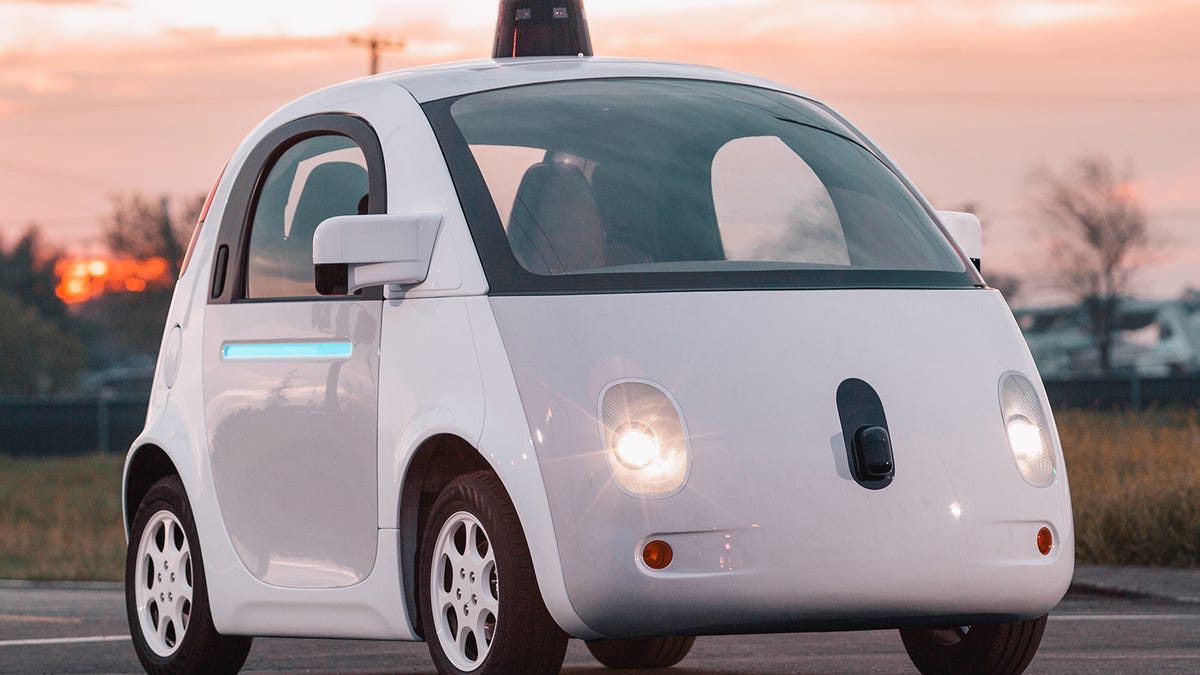Google self-driving car accepts blame in a crash for first time
Its cars have gotten into accidents in the past but not due to their own screw-ups. The new incident shows that Google's technology made a judgment error.

Google's self-driving cars still need tweaking to avoid accidents.
Google's self-driving cars have not directly caused any accidents -- until now.
An accident last month involving a bus was at least partly the responsibility of Google's vehicle, according to the company.
Under what Google calls "tricky" traffic conditions, a Google-owned 2012 Lexus RX450h hit the side of a bus on February 14, according to an accident report that Google filed with the California Department of Motor Vehicles.
Here is what happened, according to the report: Traveling on a multi-lane road in Mountain View, California, the Google vehicle signaled to make a right turn at a red light and moved into the right side of the lane. Sand bags around a storm drain were blocking its path, so it couldn't proceed. When the light turned green, the Google car waited for a few cars to pass and then began moving back into the middle of the lane to pass the sand bags. At the same time, a public transit bus was approaching from behind. The Google car expected the bus to stop or slow down to let it into the traffic flow. That didn't happen. Instead, the self-driving vehicle hit the side of the bus as it was moving back into the middle of the lane.
At the time of the accident, the report said, the Google vehicle was traveling at 2 mph, while the bus was going at around 15 mph. No one was injured. The Google car sustained minor damage to its fender, left front wheel and one of its sensors.
Proving that self-driving vehicles can navigate and share the roads safely with human drivers is a significant challenge for Google and other companies testing the technology. With both tech companies and automakers such as Toyota, Nissan, Audi and BMW racing to hit the roads with their own self-driving cars in the next several years, the safety performance of current test vehicles is under intense scrutiny.
The DMV is investigating the accident to determine who was at fault, but Google has accepted at least some role in the incident.
An advanced copy of Google's February monthly self-driving report requested by CNET stated that the self-driving car ran into a "tricky set of circumstances on El Camino Real," which is a wide road with three lanes in one direction in Google's hometown of Mountain View. Google's test driver didn't take over control of the car because he expected the bus driver to yield, the report said, while the bus driver apparently expected the Google car to yield.
"This is a classic example of the negotiation that's a normal part of driving -- we're all trying to predict each other's movements," Google said in its monthly report. "In this case, we clearly bear some responsibility, because if our car hadn't moved there wouldn't have been a collision. That said, our test driver believed the bus was going to slow or stop to allow us to merge into the traffic, and that there would be sufficient space to do that."
The incident points to two areas of concern for self-driving vehicles: How do such cars navigate situations that typically require human instinct? And who's to blame when a self-driving car gets into an accident with a human-driven car?
For now, Google said, it has tweaked its software so its cars will realize that buses and other large vehicles may be less likely to yield than other types of vehicles.

